Application
equipment
In this section you will find a range of practical information related to our solutions. In the articles, we share our experience, discuss implementation steps and highlight good practices. It is a reliable source of information and advice on the provision of drinking water in public spaces, the legal regulations in this area, the benefits of installing drinking water dispensers and the technological aspects in this field.
We look forward to reading!

Drinking water spigots and water dispensers are devices that come into direct contact with water intended for consumption. Therefore, their safety and hygiene are absolutely crucial. When choosing such devices, it is worth paying special attention to their quality, the material of construction and the certificates and approvals they have, which guarantee that the product is safe for the health of users.
Drinking water must be protected from microbiological and chemical contamination. Equipment in contact with it should therefore meet strict sanitary standards. In Poland, one of the most important documents confirming safety is the Certificate of the National Institute of Hygiene (PZH). This certification shows that the product has been tested for safety and meets sanitary requirements for contact with drinking water.
In addition, for building-mounted equipment, it is important to construction mark Bwhich certifies that the product complies with building regulations and technical standards. Having such a mark means that the device can be safely used in public and commercial areas, guaranteeing durability and resistance to mechanical and environmental factors.

Another aspect is the quality of the materials from which the sprinklers and dispensers are made. The best choice is stainless steelwhich is corrosion-resistant, easy to clean and does not release harmful substances into the water. Plastic components should be specially designed for contact with drinking water - they must be safe, certified and have antibacterial properties. This prevents the growth of bacteria and ensures the highest level of hygiene.
Good drinking water dispensers should also be designed with the needs of different users in mind. For example, it is important that they are wheelchair accessiblewhich means adequate height and easy access. Models with contactless operationwhich minimise the risk of germ transmission and are comfortable to use, especially in public areas.
Not all drinking water dispensers on the market meet all the criteria listed. The lack of appropriate certificates, poor quality materials or inappropriate design can lead to hygiene problems and, consequently, health risks. That is why it is so important to choose proven appliances, with PZH approvals and a B building mark, made of stainless steel or safe plastics, and equipped with solutions that increase users' comfort and safety.
In this section you will find a range of practical information related to our solutions. In the articles, we share our experience, discuss implementation steps and highlight good practices. It is a reliable source of information and advice on the provision of drinking water in public spaces, the legal regulations in this area, the benefits of installing drinking water dispensers and the technological aspects in this field.
We look forward to reading!
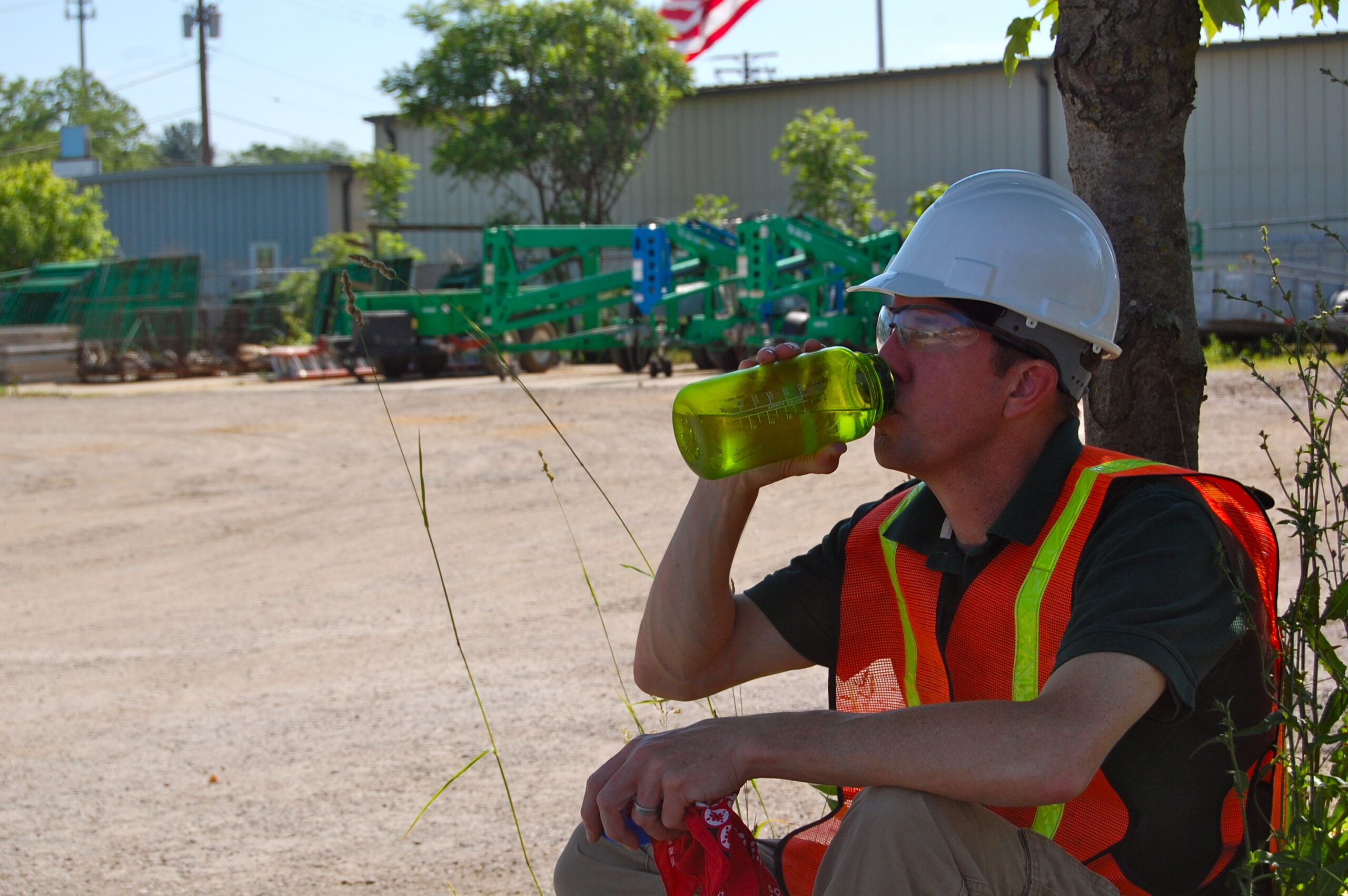
Although we all know that water is the basis of life, surprisingly many people still do not drink enough of it. Dehydration can have serious health consequences - both short-term and long-term. It is worth looking at how a lack of adequate hydration affects different age groups and people in different professions.
In adults, dehydration often manifests itself as fatigue, headaches, impaired concentration or irritability. This is especially true in office work, where focus and mental agility are crucial. For those who work physically, such as on construction sites or in warehouses, water deficiency can lead to decreased strength, dizziness and even fainting. Drinking water regularly prevents these symptoms and has a positive effect on overall wellbeing and efficiency.
Older people are particularly vulnerable to dehydration - they often feel less thirsty and their bodies are less able to regulate water and electrolyte balance. The consequences of water deficiency can be more serious for them: from balance disorders and falls to blood pressure problems and hospitalisation. For seniors, drinking enough water should be a regular part of their daily routine.
A child's body is particularly sensitive to lack of water. Even slight dehydration can lead to concentration difficulties, hyperactivity or weakened immunity. Children often forget to drink water during the day - especially when playing or studying. It is therefore important that they have easy access to fresh drinking water both at home and at school.
Not every job has the same fluid requirements. People doing intensive physical work, in high temperatures or under stress (e.g. lifeguards, cooks, teachers) should pay particular attention to drinking water regularly. Office workers too, despite their apparent convenience, can easily neglect hydration, especially if access to water is not easy.
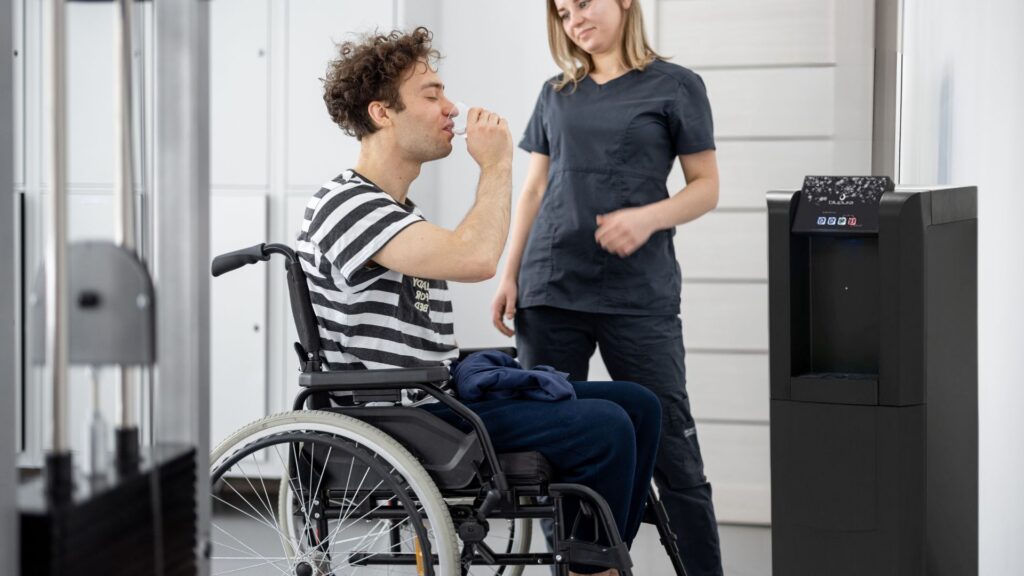
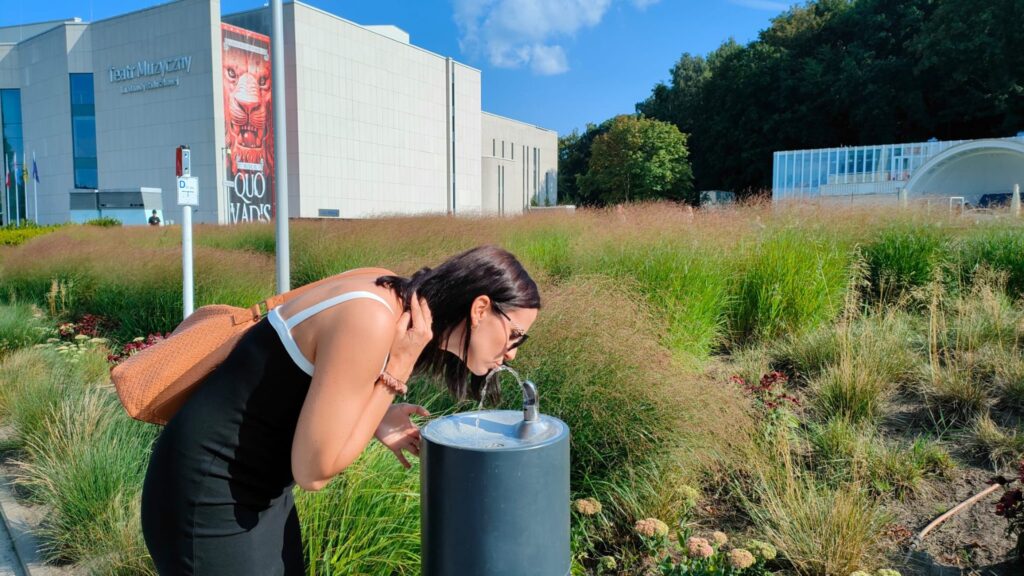

Fortunately, public water dispensers and drinking water dispensers are increasingly appearing in public spaces. Installed in offices, clinics, offices, schools or parks, they help everyone - regardless of age or place of work - to ensure adequate hydration throughout the day. It's a simple solution that really improves quality of life and promotes social health.
Whether we are children, adults or seniors - water is an indispensable part of a healthy lifestyle. It's worth remembering not only to hydrate regularly, but also to use publicly available water sources wherever they are available. Because health starts with small, everyday choices - such as reaching for a glass of water.
In this section you will find a range of practical information related to our solutions. In the articles, we share our experience, discuss implementation steps and highlight good practices. It is a reliable source of information and advice on the provision of drinking water in public spaces, the legal regulations in this area, the benefits of installing drinking water dispensers and the technological aspects in this field.
We look forward to reading!
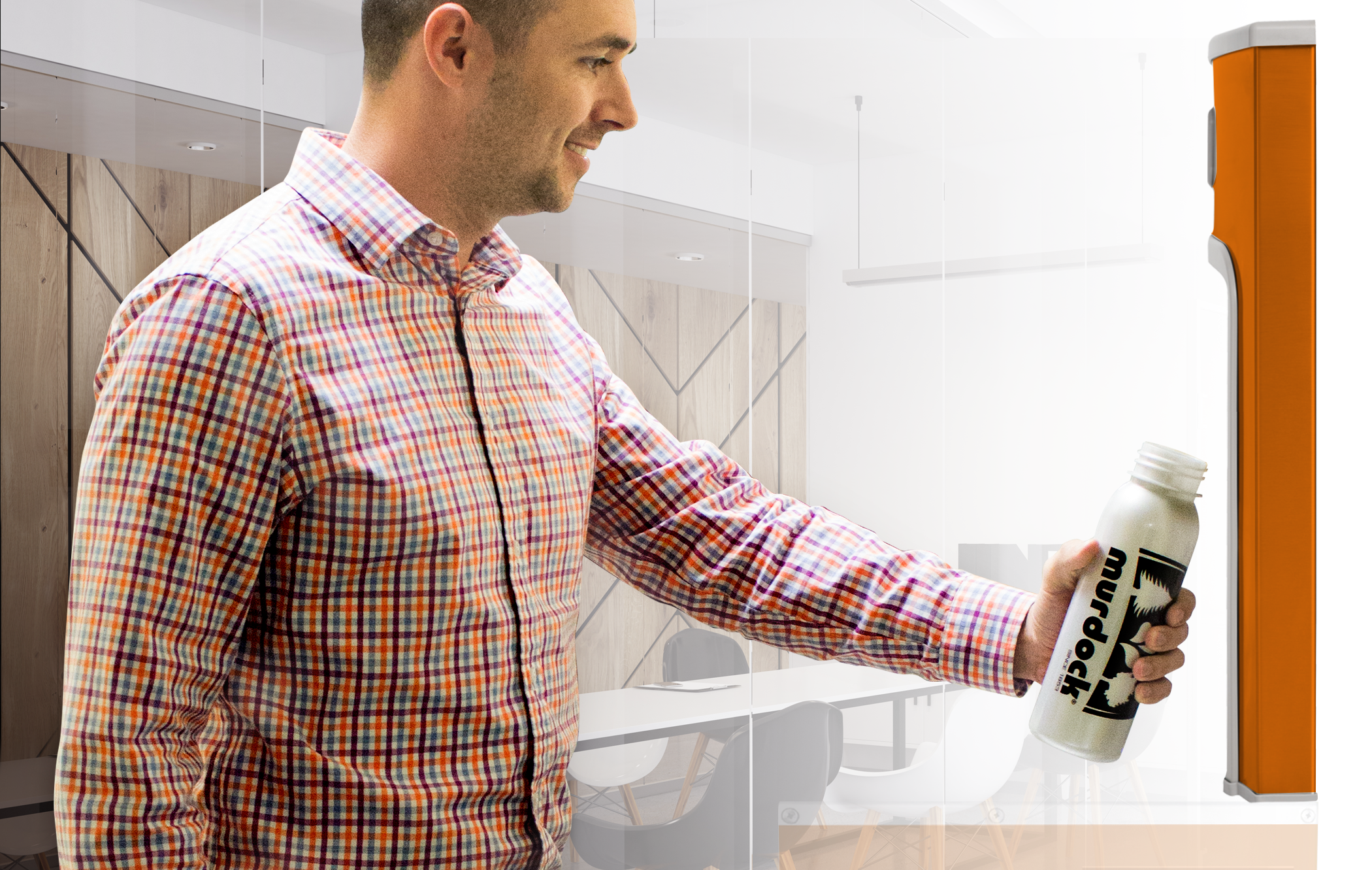
The approaching heatwave not only puts a strain on the body, but also places specific obligations on employers. The Labour Code and implementing acts make it clear what employers must do to ensure the safety and comfort of employees during high temperatures. What exactly does the legislation imply?
Under Polish law, the obligation to provide beverages to employees arises in two main cases:
This is not only good practice - it is a legal requirement.
These principles stem from, among other things:
Permanent access to water can be provided in a convenient, hygienic and economical way - by using mains water dispensers. This solution not only reduces costs (no need to buy bottled water), but also avoids the hassle of storing and replacing cans. The dispensers are aesthetically pleasing, easy to use and provide constant access to fresh water, both cold and hot - which can be useful all year round.
For field or manual workers who start their working day from a single location, it is worth setting up there special water intake station - e.g. at the gate or in the back. Equipping them with thermal bottles allows the water to be kept at the right temperature for many hours, significantly increasing comfort in hot weather. It is a small investment with real benefits for the health and efficiency of the team.
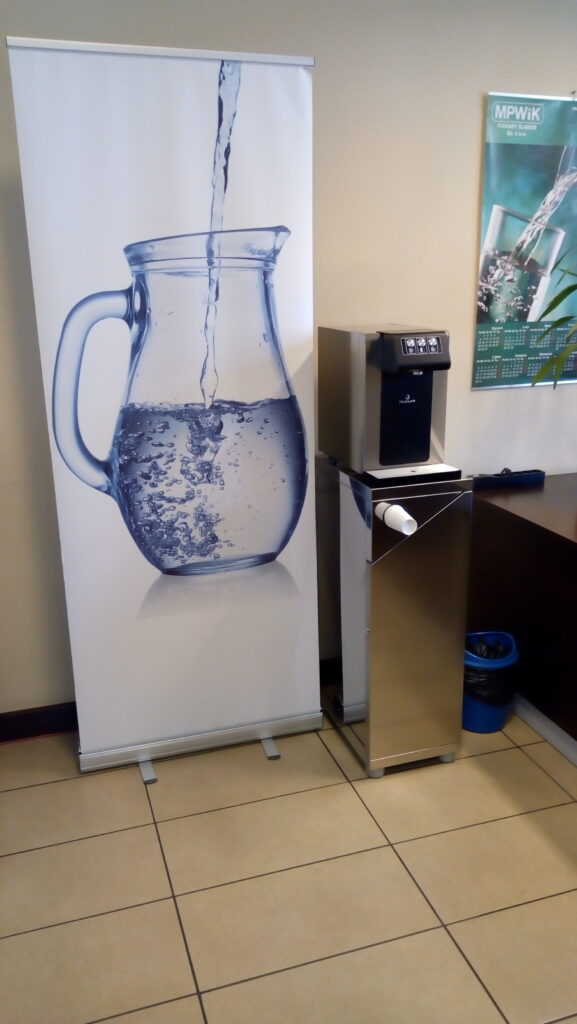
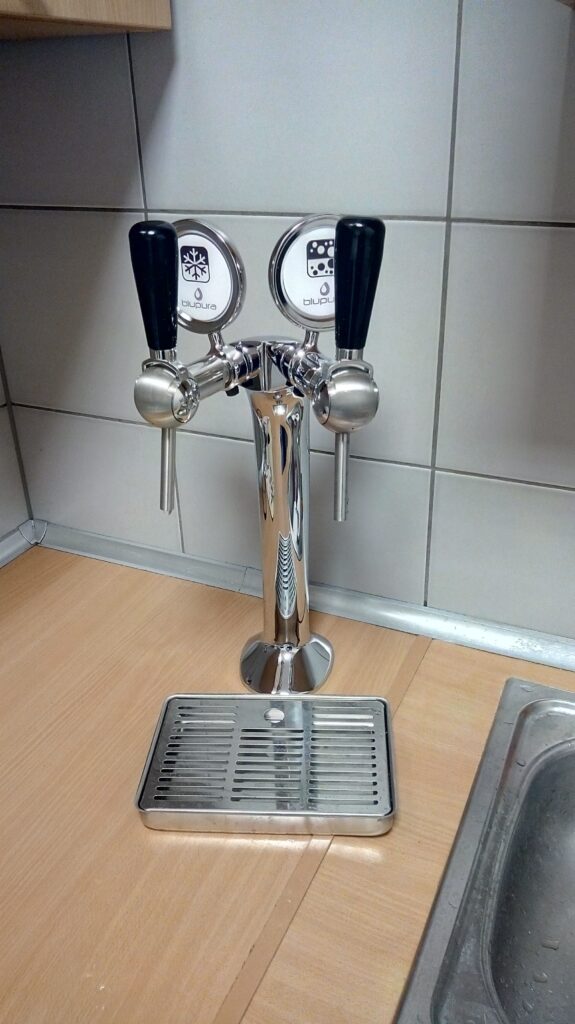
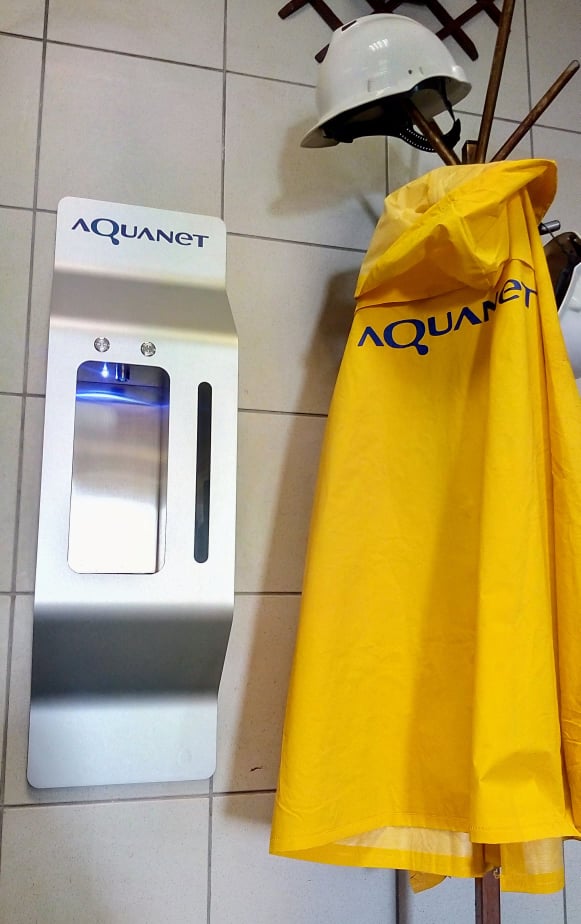
Failure to provide refreshments may result:
In hot weather, concern for employee comfort and health is not just a matter of empathy - it is a legal obligation. Employers who respond appropriately to harsh weather conditions not only meet legal requirements, but also build a positive image and reduce the risk of sickness absence.
It is not worth waiting for an inspection from the Public Health Inspectorate - it is better to check today whether your workplace has appropriate hot weather policies in place.
In this section you will find a range of practical information related to our solutions. In the articles, we share our experience, discuss implementation steps and highlight good practices. It is a reliable source of information and advice on the provision of drinking water in public spaces, the legal regulations in this area, the benefits of installing drinking water dispensers and the technological aspects in this field.
We look forward to reading!
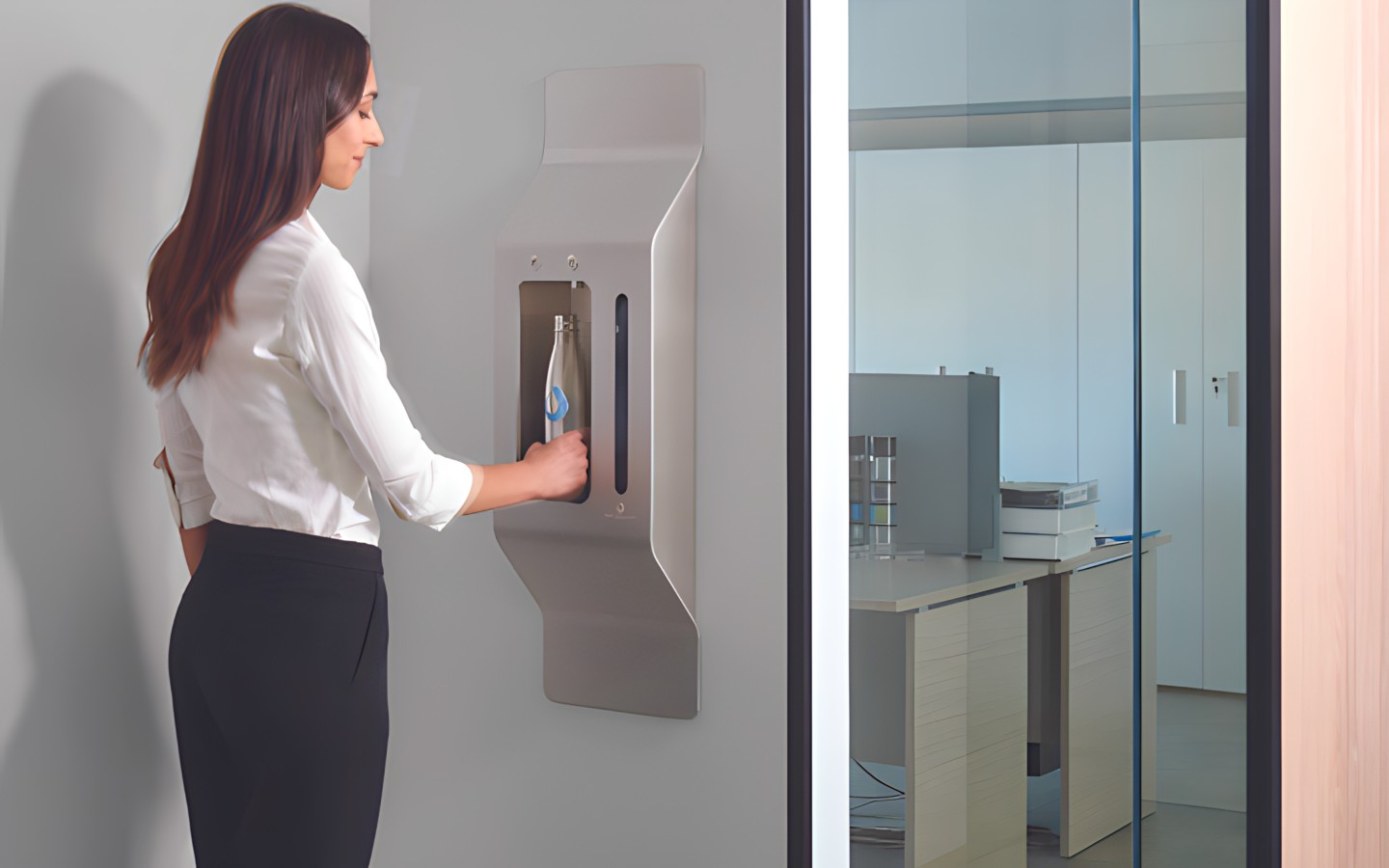
Water in the office is no longer just an employer's responsibility - it is part of the corporate culture, employee comfort and the company's business card. In an era of growing environmental and health awareness, companies are increasingly turning to modern water dispensers that combine aesthetics, functionality and care for the environment. A perfect example of such solutions are the devices offered by Zdrojownia.pl.
Modern water dispensers are a practical convenience that serves everyone - both employees on a daily basis and visitors and customers during visits to the company's premises. By offering easy access to fresh and clean water, we build a positive image of our organisation as a modern place, open to the needs of people and caring for their comfort.
Our appliances are environmentally friendly solutions. Giving up plastic bottles in favour of dispensers that connect directly to the water mains means less waste i lower operating costs. It is an investment that pays off not only financially, but also in terms of image - more and more customers and business partners appreciate companies that operate in the spirit of sustainability.
In the office, safe and easy-to-use solutions are key. Our dispensers are equipped with modern filtration systemswhich guarantee the highest water quality. In addition, features such as non-contact water supply, UV protectionwhether automatic cleaning make use of the device not only convenient but also hygienic - something that was particularly appreciated during and after the pandemic.
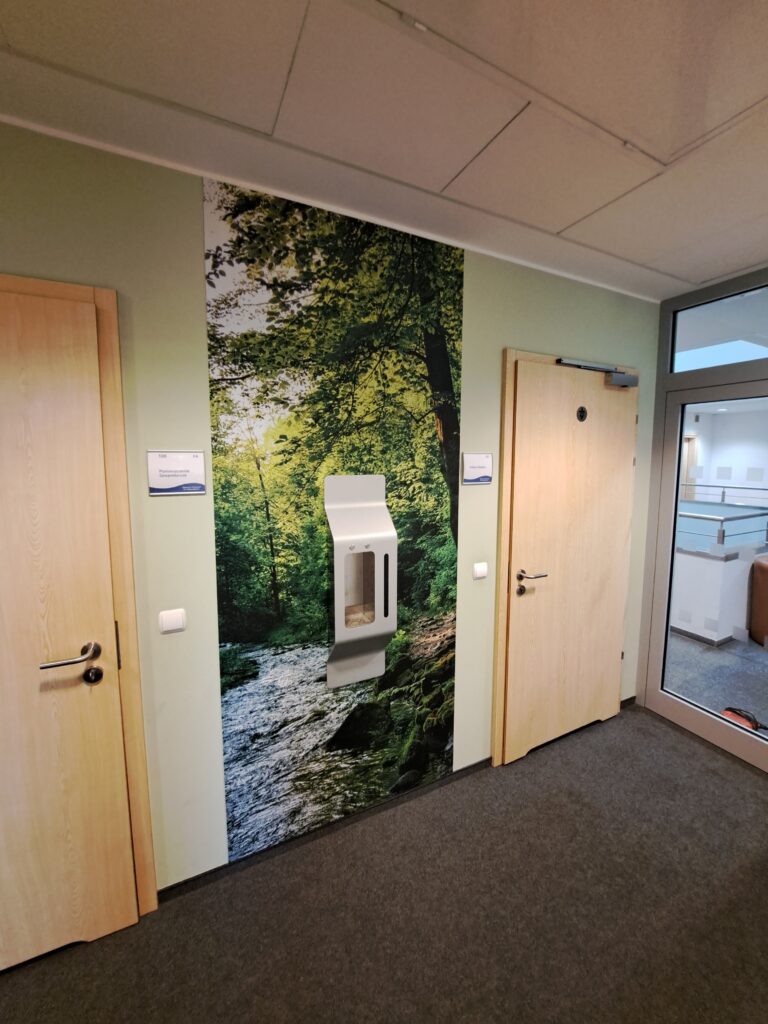
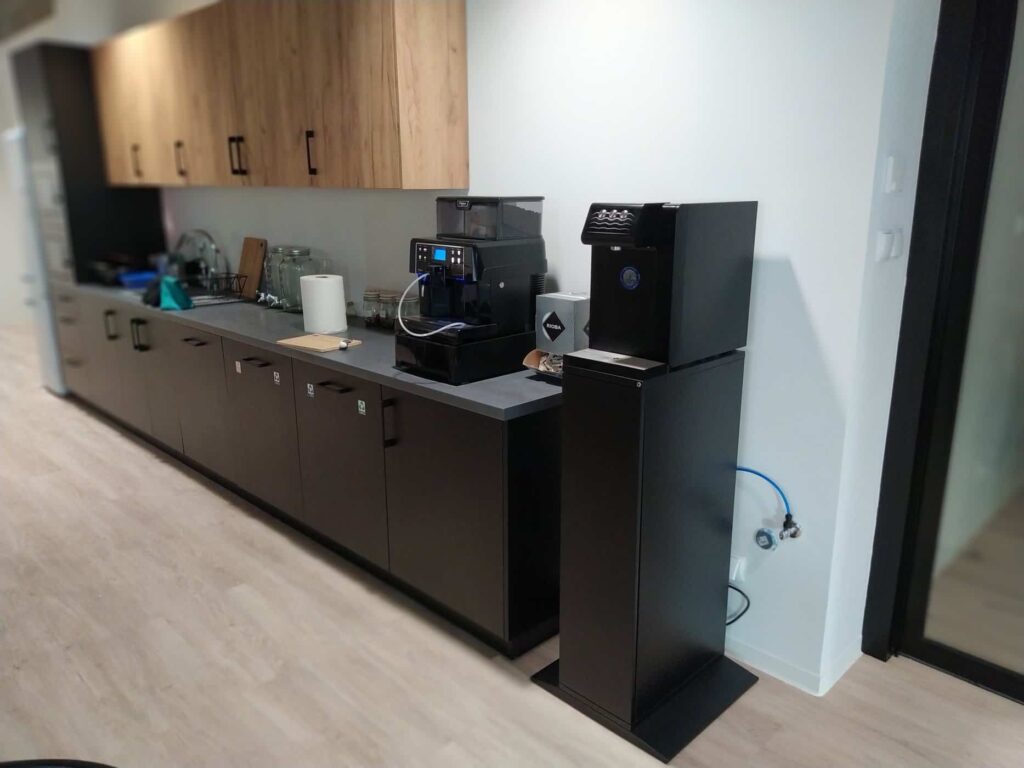
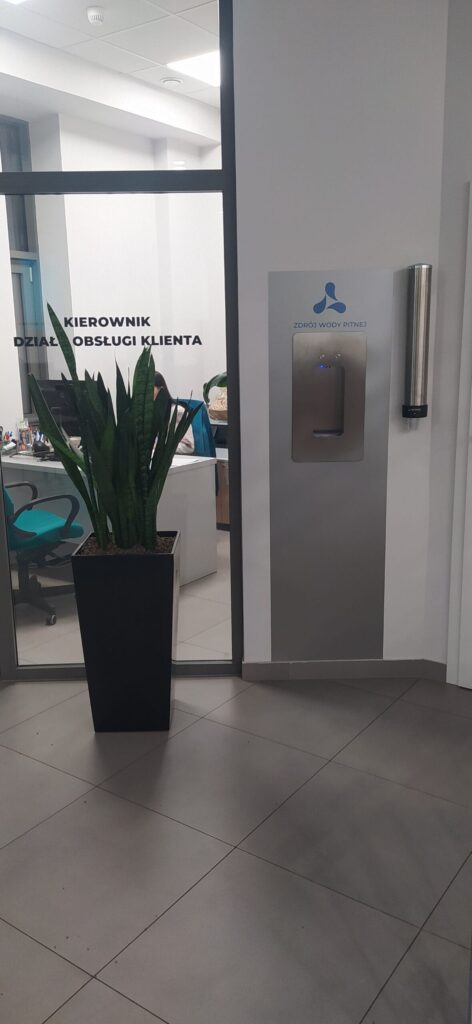
Modern offices are not only workplaces, but also representational spaces. Zdrojownia.pl distributors combine high functionality with modern, minimalist designThe range of models and finishes makes them a perfect match for open-plan interiors, conference rooms, reception areas or relaxation zones. Thanks to the variety of models and finishes, everyone will find an option to suit their company's style.
Modern water dispensers are more than just a source of hydration - they are an investment in health, ecology and a professional corporate image. By choosing solutions from Zdrojownia.pl, we gain confidence that we are supplying water in a safe, aesthetically pleasing and sustainable manner - for employees, visitors and customers.
In this section you will find a range of practical information related to our solutions. In the articles, we share our experience, discuss implementation steps and highlight good practices. It is a reliable source of information and advice on the provision of drinking water in public spaces, the legal regulations in this area, the benefits of installing drinking water dispensers and the technological aspects in this field.
We look forward to reading!
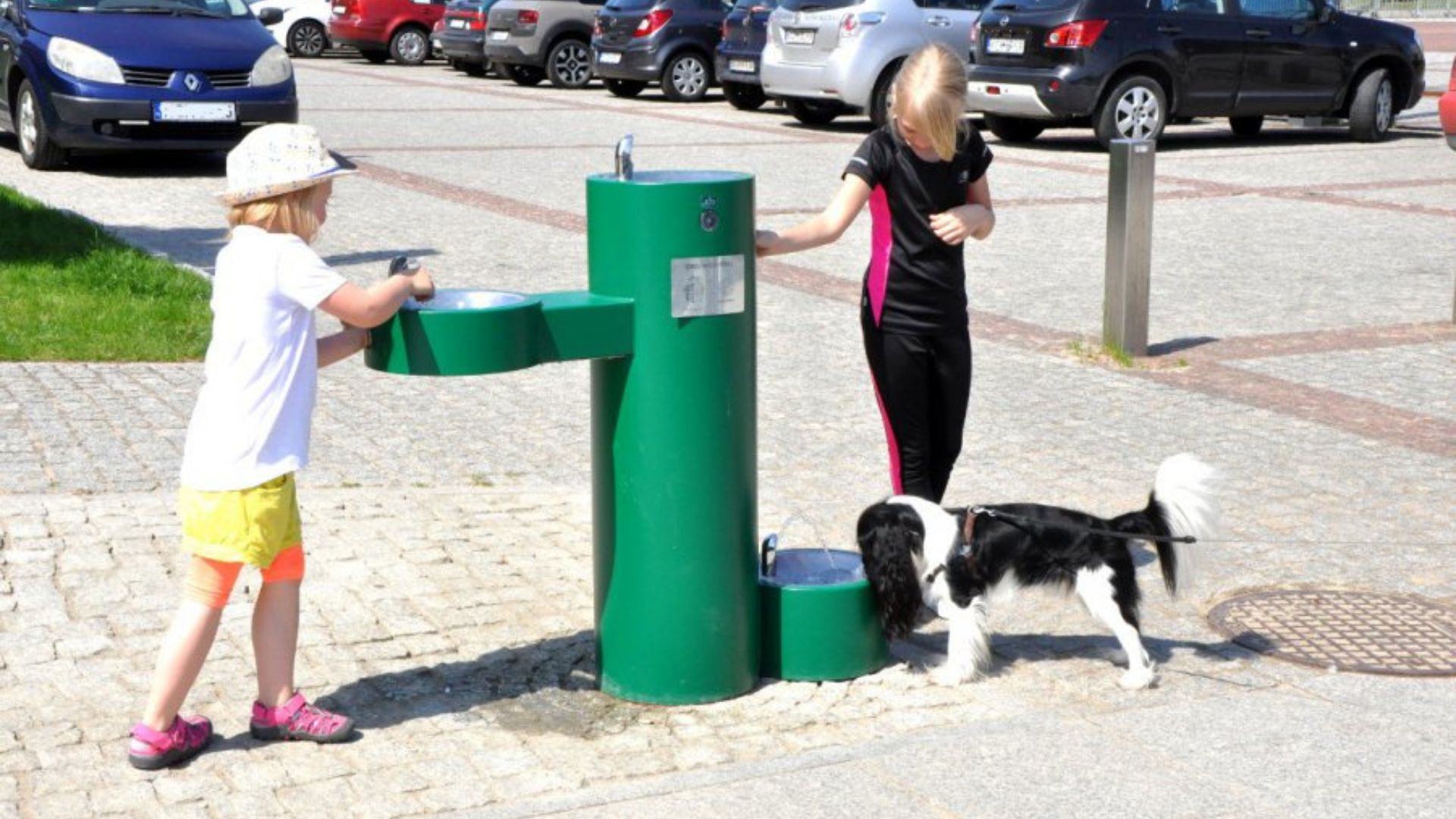
In an era of increasing environmental awareness and the need to create functional and welcoming public spaces, steel outdoor water fountains are becoming an increasingly popular solution in cities, parks, schools, playgrounds or sports facilities. Modern water features combine durability, aesthetics and environmental care.
✅ Durability and resistance to vandalism
The outdoor sprinklers are made of thick-walled stainless steel, which makes them extremely resistant to mechanical damage and acts of vandalism. Their robust construction means that they remain functional for many years, even in heavily used areas.
✅ Easy to clean
Smooth surfaces and the use of corrosion- and dirt-resistant materials make steel sprinklers hygienic and easy to clean. This is extremely important in public spaces where sanitation is a priority.
✅ Safe and functional
Spas are designed for safe and intuitive use - by both adults and children. Their ergonomic design often includes adaptations for wheelchair users, making them an accessibility-compliant element of the space (design for all).
✅ Aesthetics and personalisation
Although made of steel, the sprinklers can be painted in any colour to match their surroundings or the city's visual identity. What's more, thanks to the Personalisation Action, it is possible to place a graphic, the logo of the city, school, park or a catchy slogan promoting the drinking of tap water on the sprinkler.
One of the most important functions of the city's spas is the real reduction of plastic bottle consumption. By enabling residents and tourists to easily refill their own reusable bottles, the spas promote a change in consumer habits and a reduction in single-use waste. This is a concrete step towards reducing the city's carbon footprint and promoting sustainability.
Steel outdoor sprinklers are not only a practical solution to improve the comfort of residents, but also a tool to combat excess plastic, a way to make public spaces more accessible and an aesthetic element of street furniture. By investing in this type of device, towns and cities are demonstrating that they can combine functionality with ecological responsibility - and to everyone's benefit.
In this section you will find a range of practical information related to our solutions. In the articles, we share our experience, discuss implementation steps and highlight good practices. It is a reliable source of information and advice on the provision of drinking water in public spaces, the legal regulations in this area, the benefits of installing drinking water dispensers and the technological aspects in this field.
We look forward to reading!

Adequate hydration of the body plays a very important role in the healing and recovery process. During illness, the human body often loses more fluids than usual - through fever, sweating, vomiting or diarrhoea. Even simply lying in bed for a prolonged period of time increases the risk of dehydration, especially in older or weakened people. This is why it is so important for patients to have constant, unlimited access to drinking water - regardless of whether they are in a hospital, clinic, nursing home or other medical facility.
Counterintuitively, not everyone has the opportunity to purchase bottled water - some do not have the money, others have no one to bring it to them. For many people, long stays in medical facilities are a daily occurrence, and access to water should not be a luxury in such situations. This is why the installation of water dispensers in public and medical spaces is not only a practical, but a necessary solution.
Modern water dispensers - especially those with contactless sensor actuation - ensure hygiene, safety and ease of use. Anyone can use them themselves, without the need for staff. Such devices minimise the risk of microbial transmission, which is particularly important in hospital and clinic environments.
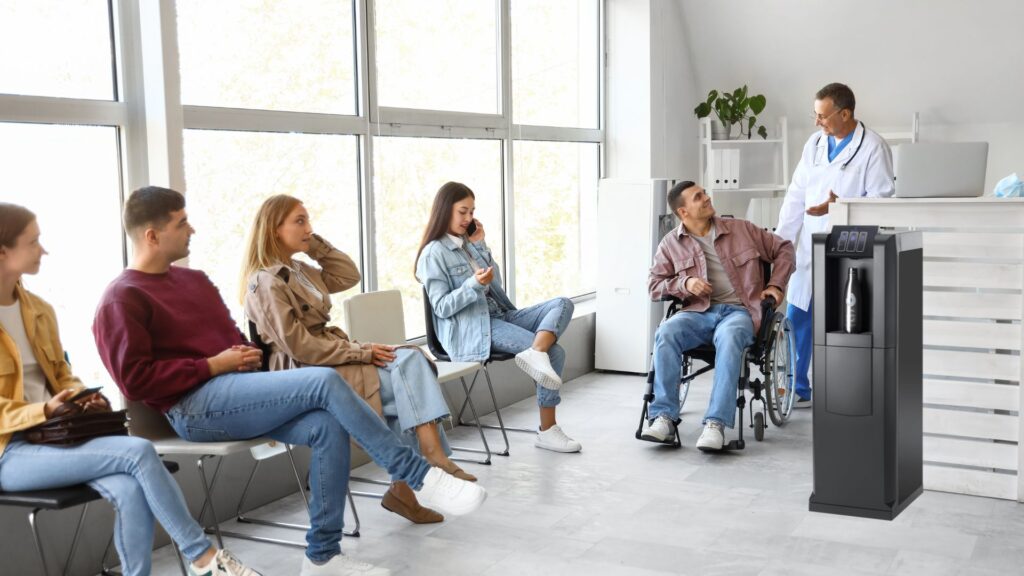
The benefits of the dispensers extend not only to patients, but also to medical staff. For doctors, nurses or paramedics, access to fresh water in the workplace means improved comfort, better wellbeing and less risk of dehydration during long hours on duty.
Introducing permanent access to drinking water is a simple gesture that can make a real difference to the health, comfort and quality of life of many people - both those who are being treated and those who are being treated.
In this section you will find a range of practical information related to our solutions. In the articles, we share our experience, discuss implementation steps and highlight good practices. It is a reliable source of information and advice on the provision of drinking water in public spaces, the legal regulations in this area, the benefits of installing drinking water dispensers and the technological aspects in this field.
We look forward to reading!

Water is an essential component of our body - it is responsible for the proper functioning of all systems, supports digestion, regulates body temperature, removes toxins and improves concentration. Although we often hear that 'you need to drink 2 litres of water a day', the actual need for fluids is more complex and depends on many factors such as age, gender, weight, height, level of physical activity or working conditions.
In adults, the average water requirement is 2 to 2.5 litres a day for women and 2.5 to 3 litres for men. However, these values can increase significantly if a person leads an active lifestyle or works physically, especially in high temperatures. Children, although smaller, also need regular hydration - toddlers aged 1-3 years should take in around 1.3 litres of water a day, and school-age children 1.6 to 2.5 litres, depending on gender and age.
One way of accurately determining the amount of water needed is the body weight conversion factor: it is assumed that you should drink between 30 and 40 ml of water for each kilogram of body weight. For a person weighing 70 kg, this means between 2.1 and 2.8 litres a day - a good starting point that you should adjust according to your needs.
The type of work carried out also makes a huge difference to hydration levels. People who work physically, especially outdoors - on construction sites, in agriculture or in logistics - may need up to 4 litres of water a day to replenish losses due to sweat and high ambient temperatures. Even office workers should not underestimate the need to drink regularly - air conditioning and long hours in front of a computer can lead to dehydration, although we do not always feel it immediately.
It is also worth mentioning factors that increase the need for water. These include, but are not limited to: intense physical exertion, high temperatures, feverish illnesses, and diets high in protein, fibre or salt. Coffee, tea and alcohol are also diuretics and can flush water out of the body, so it is a good idea to drink an extra glass of water in their company.
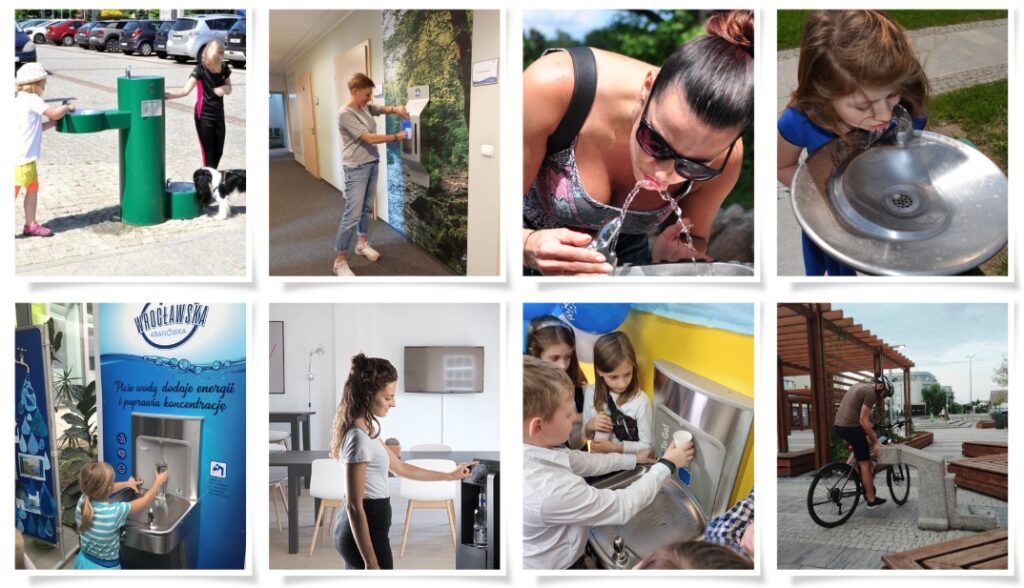
Too little water intake can take its toll on health and daily functioning very quickly. Even minor dehydrationof 1-2% body weight, can cause symptoms such as fatigue, loss of concentration, headaches, dizziness and irritability. The body, deprived of adequate hydration, begins to function less well and metabolic processes are slowed down.
One of the first signs of dehydration is darker colour of urine and a feeling of dry mouth. As dehydration progresses, more troublesome symptoms appear - dry skin, decreased tissue elasticity, reduced blood pressure, a feeling of weakness and, in extreme cases, even heart rhythm disturbances. Long-term fluid deficiencies can lead to serious health consequences such as kidney stones, constipation and even cognitive impairment.
Dehydration is particularly dangerous for the elderly and children. In seniors, the sensation of thirst is often impaired, so that they do not reach for water often enough. Children, on the other hand, lose water more quickly and are more prone to water shortages, especially during hot weather, physical exertion or illness.
It is worth remembering that desire is late signalThe body already starts to feel the lack of water. Therefore, we should not wait to drink until we are really thirsty - it is better to drink regularly, in small sips, throughout the day.
Getting into the habit of constant hydration can significantly improve our mood, performance at work and overall functioning. It is one of the simplest steps towards a healthier lifestyle.
A good indicator of hydration levels is the colour of the urine - light straw-coloured means that everything is normal. If, on the other hand, the urine becomes dark, this is a sign that the body needs more fluids. Other symptoms of dehydration include a dry mouth, tiredness, problems concentrating or a headache.
In fact, there is no one-size-fits-all amount of water we should drink. The key is to watch your body, your lifestyle and adjust your fluid intake according to your individual needs. It is also a good idea to ensure that you have easy access to clean water - both at home and in your workplace or study area. Using water dispensers, street springs and reusable bottles is a simple way to make hydration a healthy daily habit.
In this section you will find a range of practical information related to our solutions. In the articles, we share our experience, discuss implementation steps and highlight good practices. It is a reliable source of information and advice on the provision of drinking water in public spaces, the legal regulations in this area, the benefits of installing drinking water dispensers and the technological aspects in this field.
We look forward to reading!
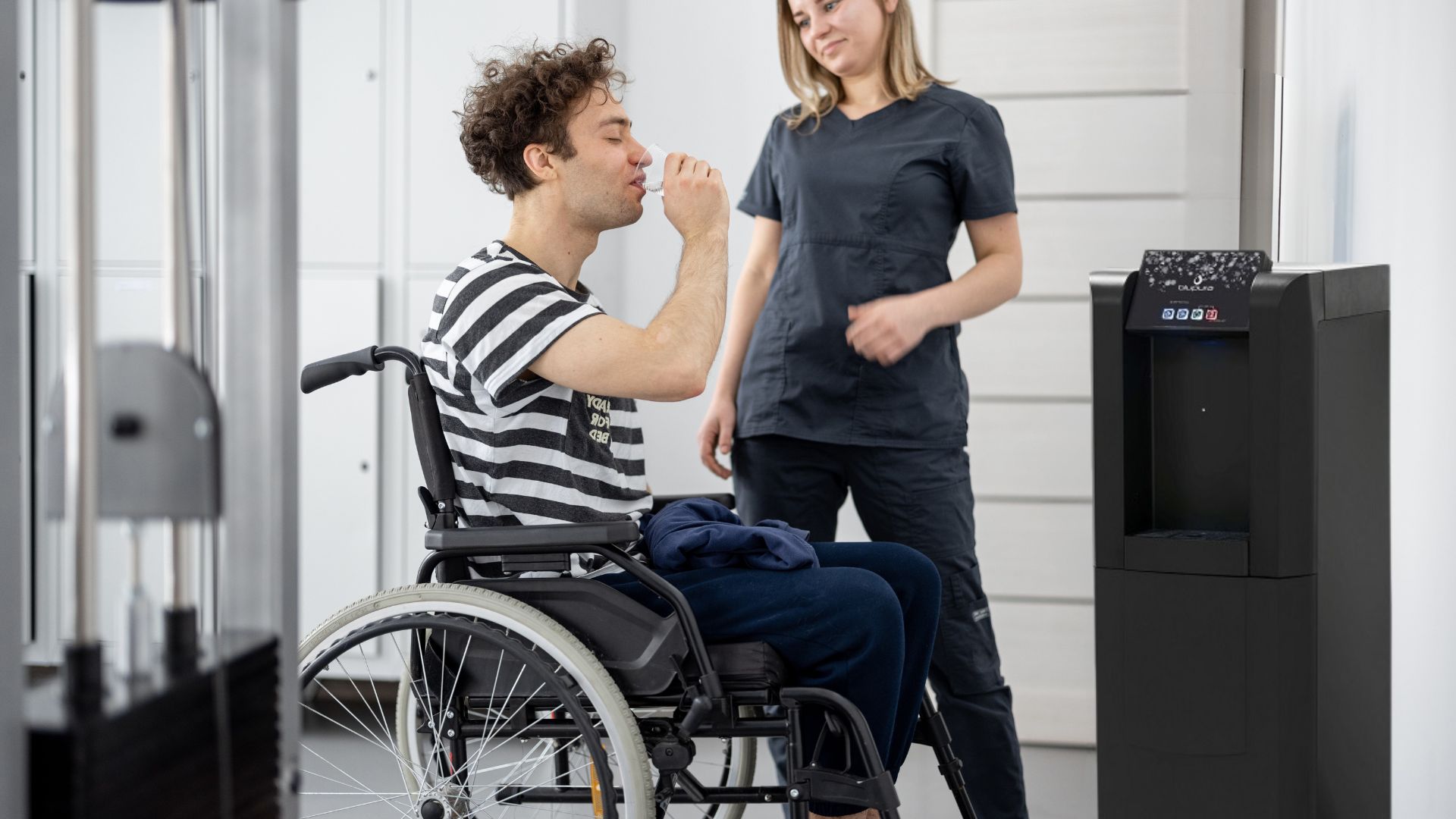
Access to drinking water in public spaces and public buildings is nowadays not only a question of comfort, but above all of equality and accessibility. Both outdoor springszneas well as indoor water dispensers should be designed so that they can be used by people with disabilities - especially those in wheelchairs. Appropriate design solutions describe both American ADA regulationsas well as Polish "Catalogue of good design practices" issued by the Ministry of Funds and Regional Policy.
In accordance with ADA (Americans with Disabilities Act), drinking water outlets must be designed to allow full and convenient access for wheelchair users. Key principles are:
Polish Catalogue of Good Design Practices confirms similar requirements. According to it, urban infrastructure facilities, such as sprinklers or watering holes, should:
For indoor water dispensers (e.g. in offices, schools, clinics), there are also clear standards:
By properly hanging the unit on the wall and maintaining clearance underneath, a person in a wheelchair can easily drive up and pour water into a cup or bottle themselves.
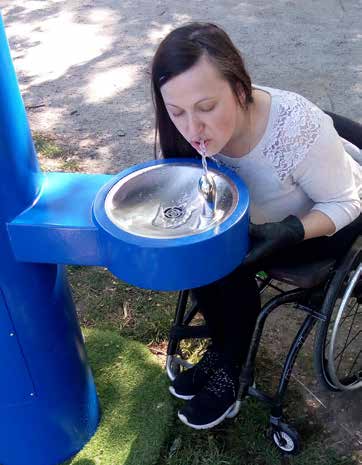
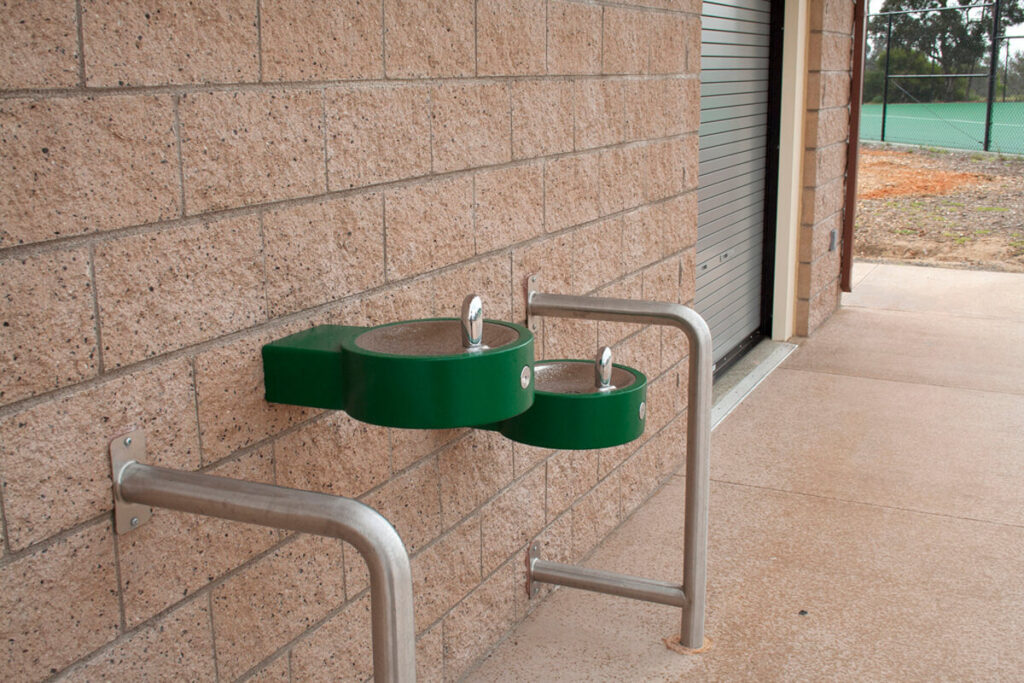
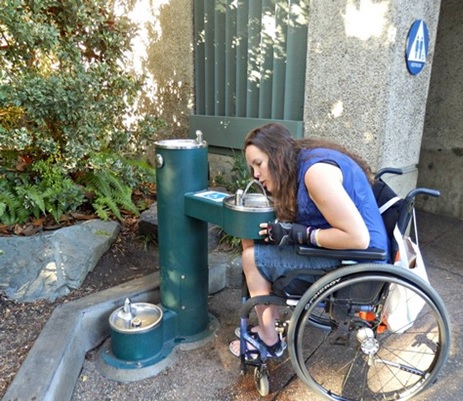
Adapting facilities to the needs of all users is a regulatory obligation, but also a sign of social responsibility and design awareness. With the right approach, everyone can use public spaces equally, comfortably and safely.
Both the American ADA standards and the Polish design recommendations make it clear: universal design is not a choice - it is a necessity. By investing in sprinklers and dispensers that comply with these standards, we ensure not only accessibility, but also the dignity of users.
In this section you will find a range of practical information related to our solutions. In the articles, we share our experience, discuss implementation steps and highlight good practices. It is a reliable source of information and advice on the provision of drinking water in public spaces, the legal regulations in this area, the benefits of installing drinking water dispensers and the technological aspects in this field.
We look forward to reading!
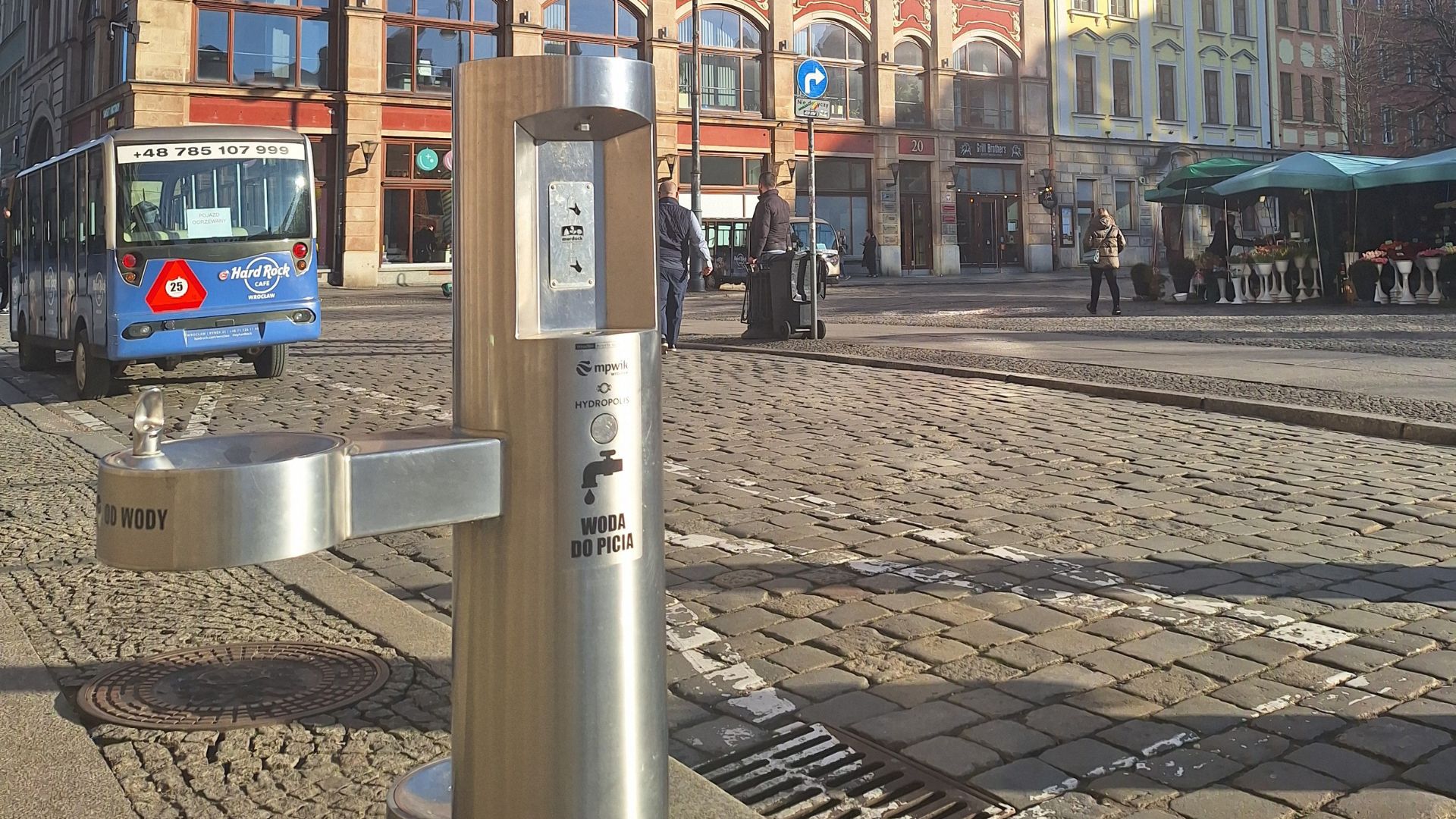
In an era of growing environmental awareness and concern for the comfort of residents and users of urban spaces, the installation of drinking water dispensers (also known as watering points or springs) in public spaces is becoming not only a practical solution, but a necessary one. This is not only an expression of concern for the comfort of citizens, but also a real action to protect the environment and fulfil legal obligations.
Drinking water wells are all about easy access to clean, safe water for everyone - regardless of age, social status or time of day. Their presence in parks, markets, bus stops or in offices and schools means convenience, economy and the ability to hydrate oneself during daily chores or physical activity. Particularly in hot weather, watering holes become invaluable and their absence is felt.
Spas are also a concrete answer to the problem of excess single-use plastic. By promoting the use of reusable bottles and providing refill points, cities can significantly reduce the number of plastic bottles ending up in the environment. This is an environmental measure that has a direct impact on the amount of litter in urban spaces, forests, rivers and landfills.
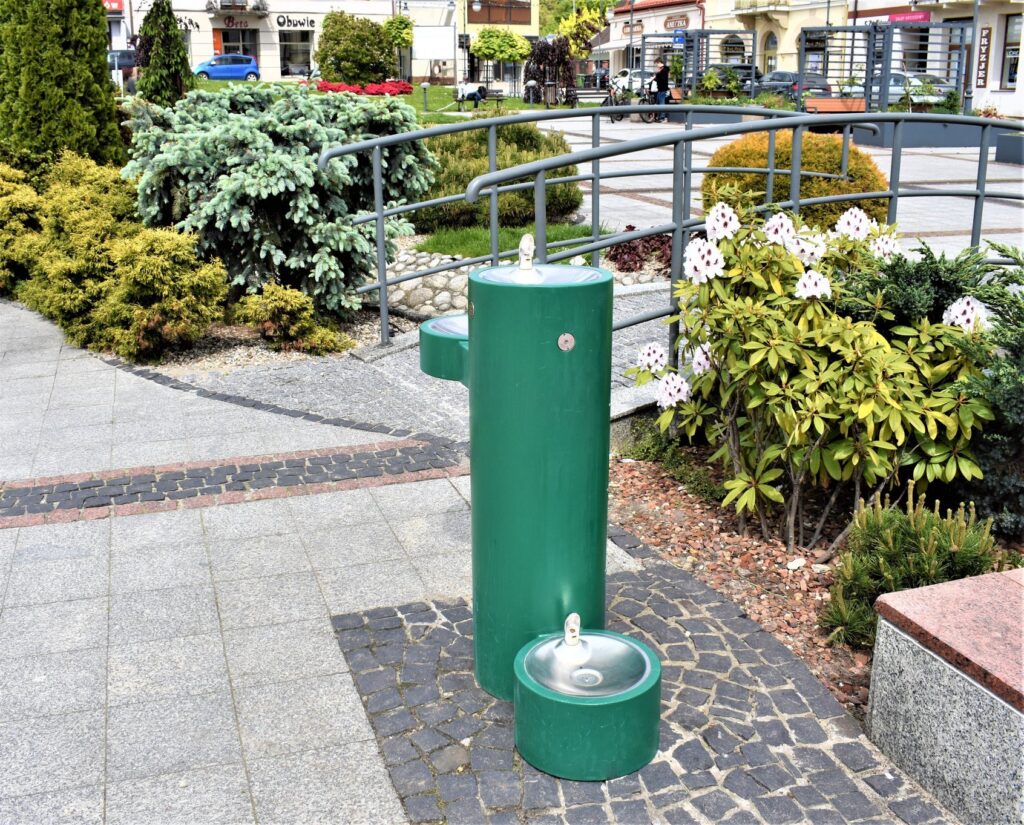
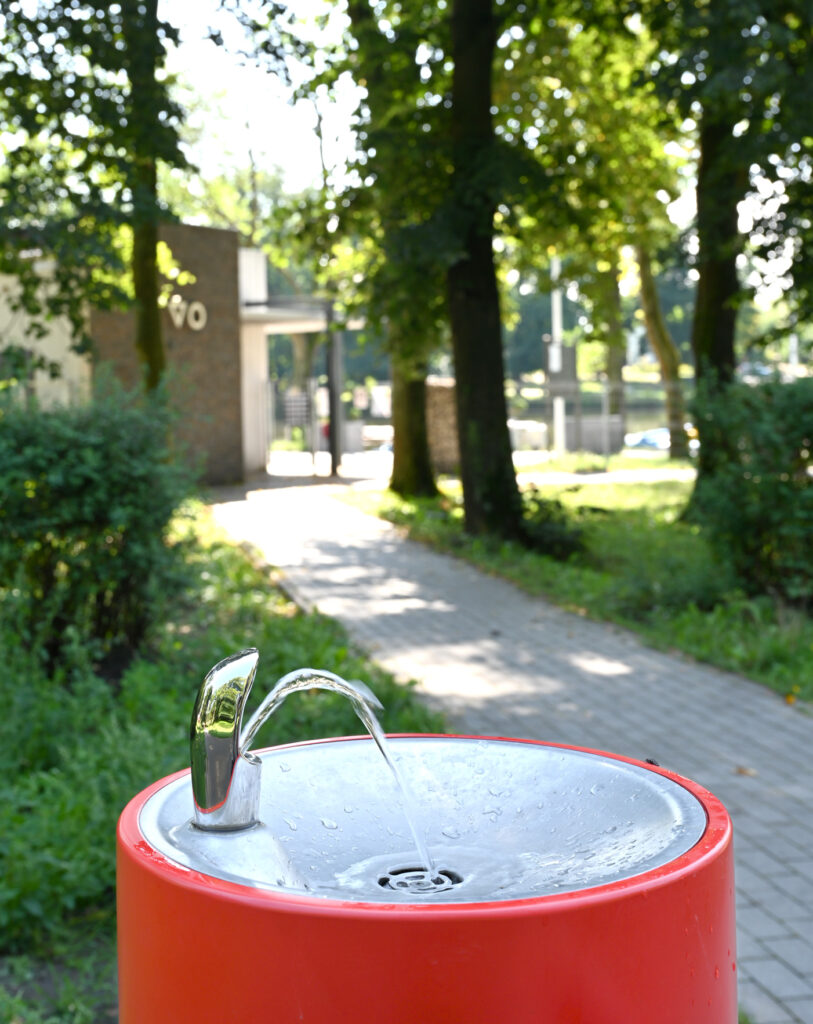

Local water companies that supply drinking water to residents should treat the installation of sprinklers as part of their image strategy. This is a great opportunity to build positive PR and show that the company not only supplies water, but also actively supports sustainable development and modern urban solutions. Communicating the quality of local water and allowing it to be consumed free of charge in public spaces can significantly increase residents' confidence in tap water.
It is also worth noting that the provision of unrestricted access to drinking water in public spaces is no longer solely the goodwill of local authorities. According to Directive 2020/2184 of the European Parliament and of the EU CouncilMember States are obliged to take measures to improve access to water, especially in public places. The installation of drinking troughs is therefore not only good practice, but also part of the implementation of EU law.
In offices, offices, schools, health centres and other public facilities, access to free drinking water should already be standard. It is a small cost that translates into great comfort for users, and at the same time a signal that the institution is following modern, socially friendly solutions.
The installation of drinking water outlets in public spaces is a solution that brings with it benefits alone - both for residents, the environment and the institutions responsible for water infrastructure. It is convenience, economy, ecology and responsibility in one. It is also an opportunity for city and municipal authorities to implement a practice that combines care for the common good and modern urban space management.
In this section you will find a range of practical information related to our solutions. In the articles, we share our experience, discuss implementation steps and highlight good practices. It is a reliable source of information and advice on the provision of drinking water in public spaces, the legal regulations in this area, the benefits of installing drinking water dispensers and the technological aspects in this field.
We look forward to reading!
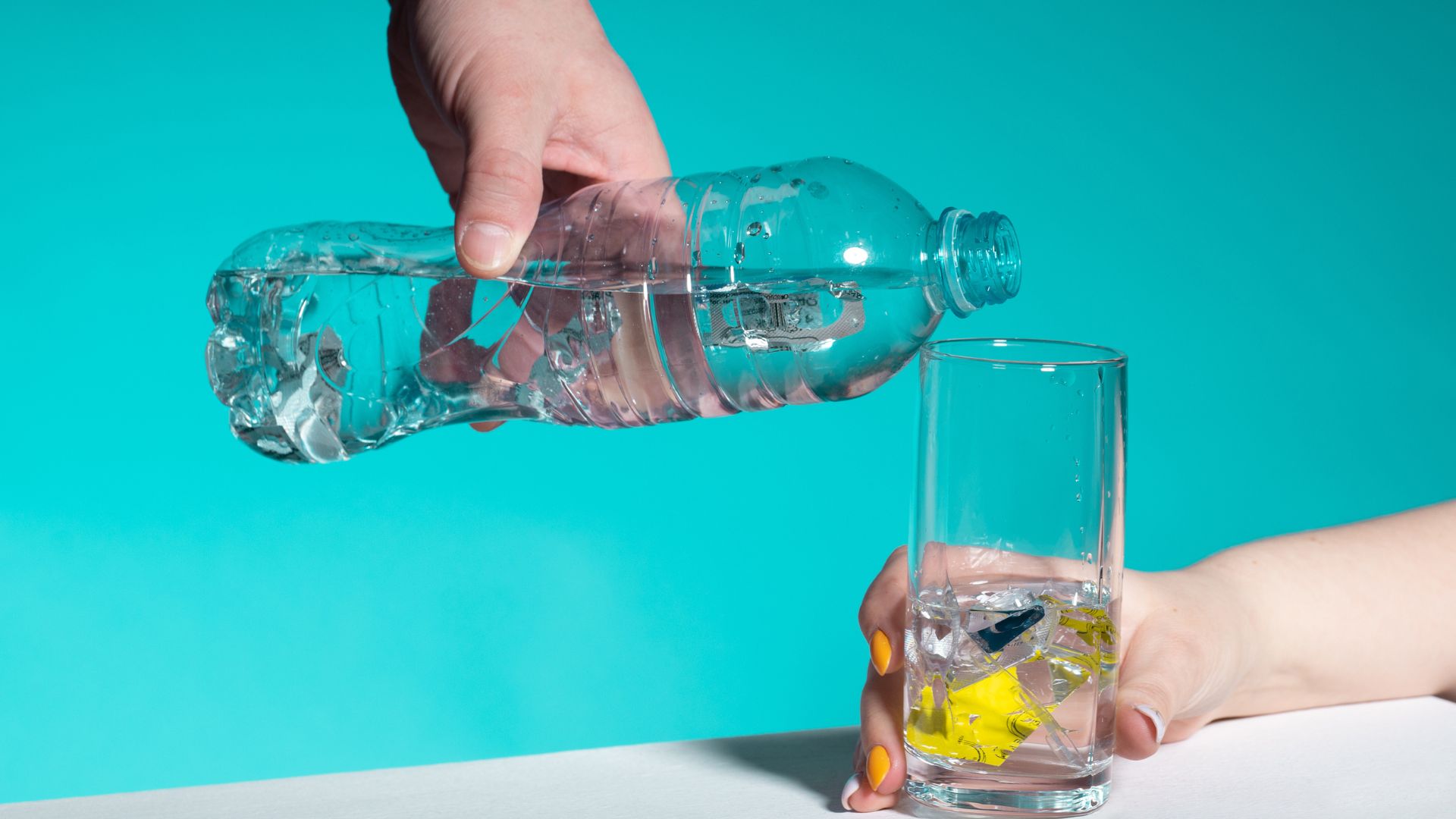
Bottled water has for years been recognised as a convenient and 'pure' alternative to tap water. Colourful labels, slogans about "spring freshness" and crystal clear origins are supposed to convince us that it is the best choice for health. Unfortunately, more and more studies and reports indicate the opposite - bottled water is not only often not superior in quality to tap water, but can contain alarming amounts of microplastics and other contaminants.
One of the most high-profile studies conducted by researchers at the State University of New York at Fredonia, published in 2018, found that more than 90% of water bottles of various brands contained microplastic. The samples came from nine countries and the average content was as high as 325 microplastic particles per litre of water. What is more, it was the water sold in plastic bottles, not the tap water, that had the highest contamination.
Microplastics in the body can lead to inflammation, endocrine disruption and digestive problems. These particles can also bind to environmental toxins and transport them into body cells.

The quality of bottled water is determined not only by the process of obtaining and bottling it, but also by the storage method. Exposure of PET bottles (the most common type of plastic) to UV radiation - for example, during transport or storage in the sun - leads to plastic degradation. As a result of this process chemical compounds such as antimony (antimony) or bisphenol A (BPA) may be released from the bottlewhich have proven toxic effects.
Research published in the journal Environmental Pollution show that water stored in plastic when exposed to heat (even at 30-40°C) begins to release higher levels of chemical compounds that can easily penetrate the body.
Contrary to common myths, tap water in many Polish cities meets strict quality standards and is regularly tested. In addition, it can be further filtered using jugs, filter bottles or sub-bottle systems. This is not only healthier, but also a much cheaper solution - both for your pocket and for the environment.
If you are concerned about comfort and want to avoid plastic, it is worth opting for a water in glass bottles or - even better - use reusable bottles, such as stainless steel, glass or high-quality BPA-free plastic. This is a practical, environmentally friendly and, in the long term, healthier solution.
While bottled water may seem 'safe' and 'better', the truth is more complex. Microplastics, chemicals released from plastic and uncontrolled storage conditions are real risks that speak to the need to rethink daily choices. Tap water, properly filtered and stored in a safe container, can not only be healthier, but also friendlier to the planet.